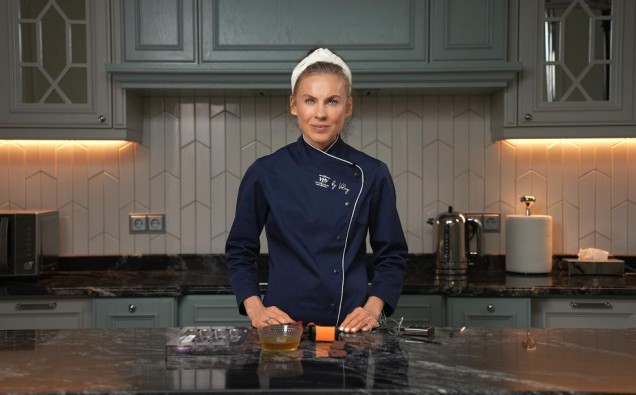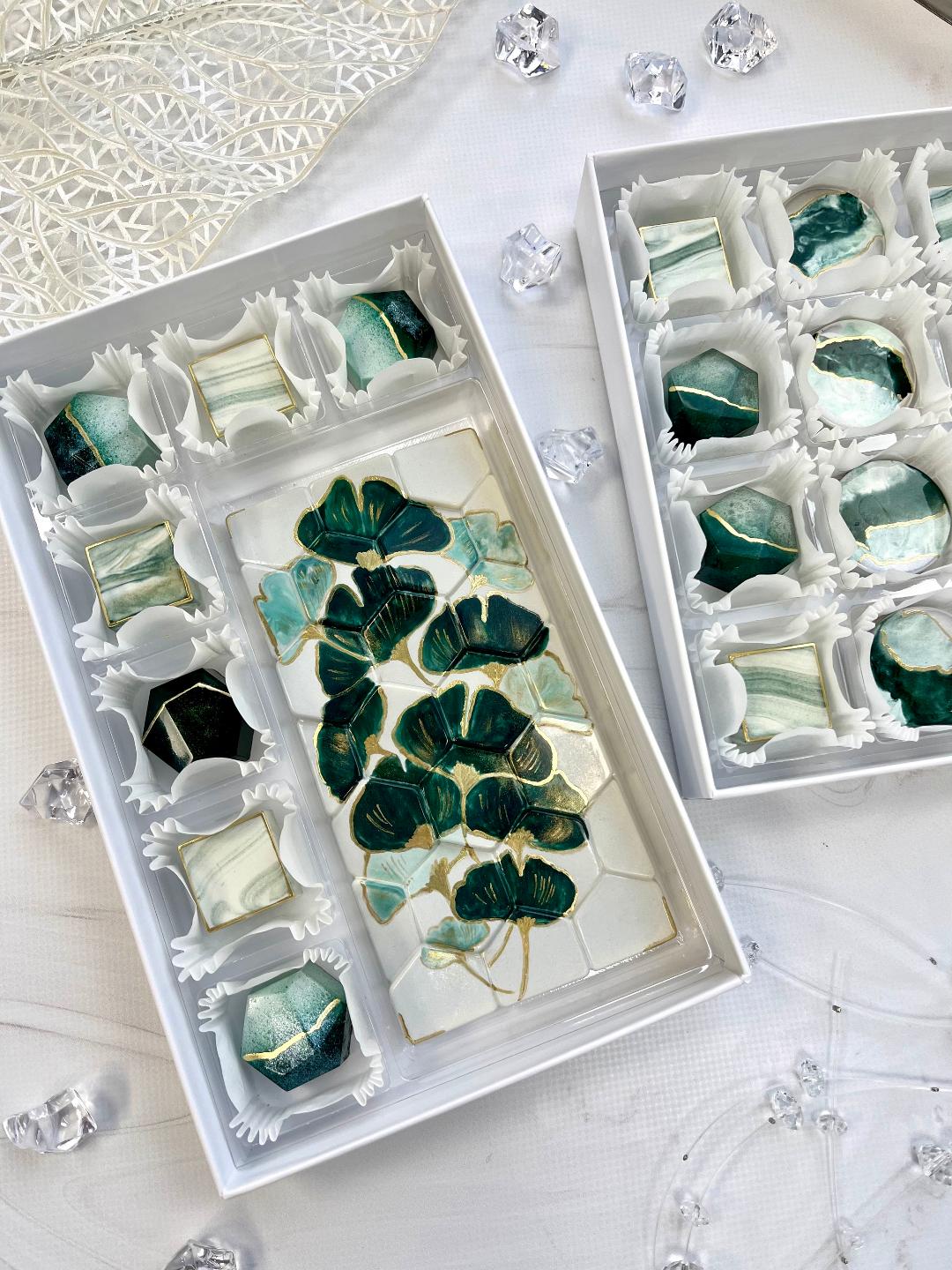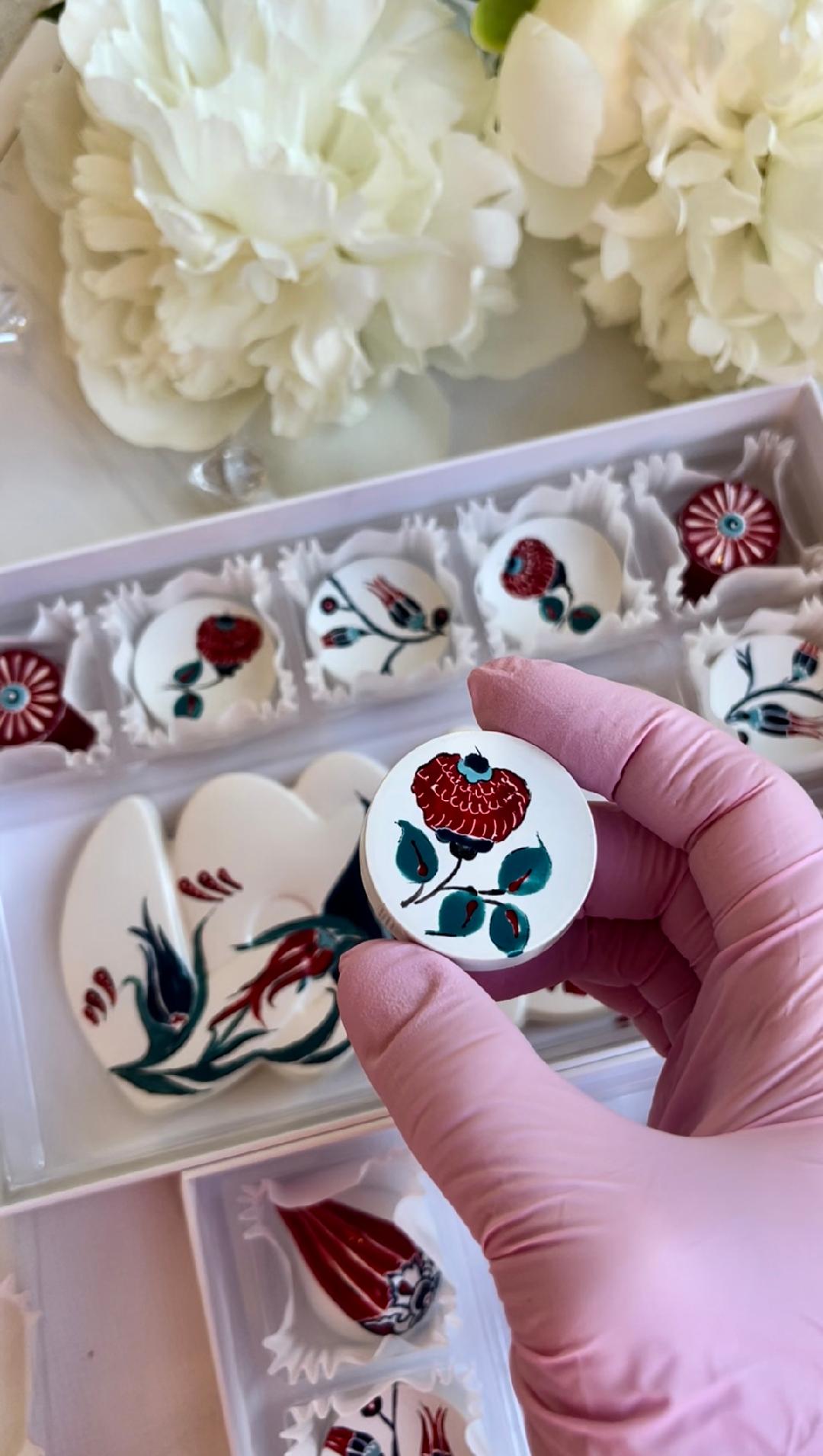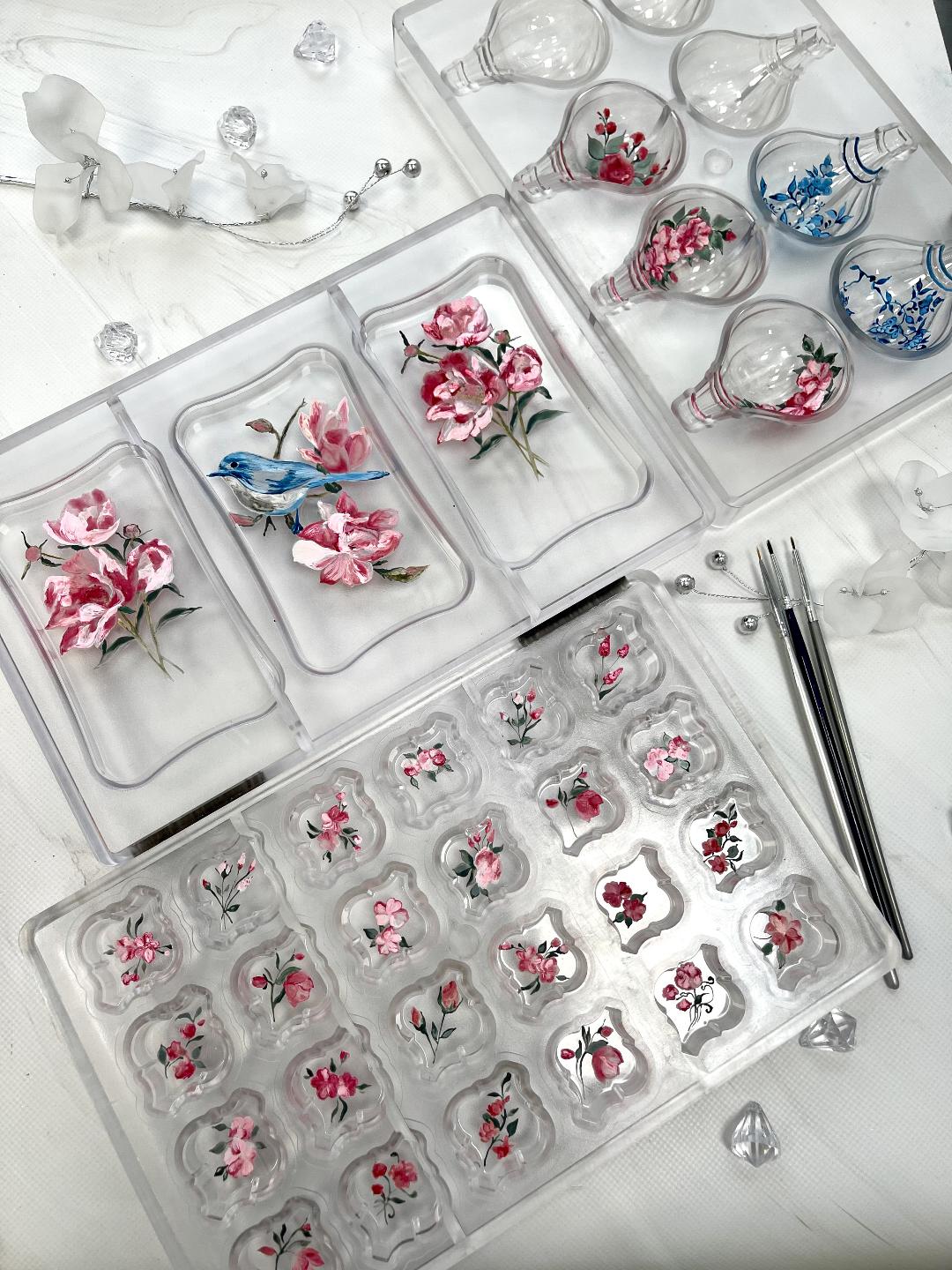Russian Chef Valeria Sorokina (Instagram A/c: vhv.artchocolat) hails from Saint Petersburg. She works as a professional chocolatier and specializes in making beautiful chocolate products that are painted by hand. Her path to becoming a confectionary artist started as a quest to uncover who she really was and what her calling in life was. She was once on her way to Barcelona with her family. When she noticed something remarkable in a nearby patisserie’s display window, this trip became pivotal. She had only ever encountered dark, milk, and white chocolate up until that point. She was astonished no doubt, to see a bright red bonbon on the Bubo pastry shop’s display that looked like a polygonal heart. She was drawn in by its striking beauty and understood that it was unique. She couldn’t stop thinking about that special bonbon when she got home. She began exploring the world of chocolate bonbons after being inspired by what she had seen. She began by watching videos on YouTube that taught her how to temper chocolate. She had to learn things on her own via trial and error because there wasn’t much information available. When she made her first batch of bonbons, she discovered that using cocoa butter opened up amazing possibilities for artistic embellishment and that chocolate moulds allowed for experimenting with patterns and shapes. Starting from scratch, she eventually established a new niche in the confectionery industry, making one-of-a-kind chocolate items that are widely sought after across the world.
Q.) Are these hand-painted chocolates simple to make?
Chef Valeria: Making chocolate confections by hand is a labor of love and definitely not a simple undertaking. It calls for dexterity, accuracy, and a thorough comprehension of both creative methods and the tempering of chocolate. The technical components of designing chocolate collections are, on the one hand, pure science. These collections are the result of several physical and chemical processes that must be carefully taken into account. Critical thinking and attention to detail are also very helpful in my line of work. However, there is also the aesthetic aspect to consider. It is essential to create a chocolate selection that genuinely makes the clients happy. An actual example would be to utilize white chocolate with white coloring if the finished product is required to have a white background. The white colorant, titanium dioxide, is prohibited for usage in a number of nations worldwide, and it turns out that not all consumers enjoy white chocolate—rather, they prefer milk chocolate. For each collection, it is therefore essential to strike a balance between the color, its intensity, and the distinctive production method.
Q.) Every chocolate confection you’ve made appears to be an exquisite work of art. What gives you inspiration?
Chef Valeria: I was exposed to a wide range of artistic influences at an early age, including painting, design, and fine craftsmanship. I always made it a point to attend both big and small museums and galleries when I traveled to different places. I eventually started to see chocolate as a medium for artistic expression as well as a treat. Since even the most erratic thing can include aesthetics, why shouldn’t that object be chocolate? Not only must art be attractive, but it must also be unified and harmonious in my opinion. This is a concept I have applied to the realm of chocolate crafts. I want to make collections in my work that are visually appealing as well as pleasing to the taste receptors.
● Painting (both classical and contemporary), color, form, composition: All of these transport me to a realm of concepts and feelings, providing me with ideas for my own endeavors.
● Architecture: Embodies the harmony between rationality and beauty. No matter the era or style, every architectural masterpiece combines artistic intent with engineering thought. Modern minimalist buildings, baroque palaces, and gothic cathedrals all teach us to value the elements and structure that give the world we live in its singular form.
● Interior design: The arrangement of décor and the selection of fabrics and textures in an environment may all be sources of inspiration.
● Authentic crafts: Ceramics, carpets, wood carving. Every handcrafted object embodies the artist’s skill and effort, as well as their inherited worldview.
Q.) What crucial considerations are made for taste, look, and texture when making chocolate, in your opinion?
Chef Valeria: One of the most difficult problems faced by confectioners and chocolatiers is figuring out how to integrate taste and aesthetics in chocolate products. Of course, first and foremost, chocolate must be delicious. Making a good impression on the customer is one of my top goals, therefore it might be challenging because not all chocolate is appropriate for every collection (For instance, using dark chocolate to make a collection of light-colored items is technically difficult). To eventually produce a collection where appearance and taste coexist together, constant experimentation and balance-seeking are required.
Q.) There are numerous health benefits that chocolate offers. Which components would you normally avoid using and which would you use regularly to assure the health benefits?
Chef Valeria: Without a doubt, only the best components are used in our production: expert-grade French, Belgian, and Swiss chocolate; French frozen purées; the best cream; butter; etc. Preservatives are not added by us, which, on the one hand, drastically shortens the finished chocolate goods’ shelf life when compared to factory manufacture. However, it also guarantees exceptional flavor and health advantages.
Q.) Every chocolate you make has a specific theme. Why?
Chef Valeria: Each chocolate has a deeper meaning and relationship because of its themes. They enable me to narrate a tale, arouse feelings, and provide viewers of my works a richer, more immersive experience. A topic gives my work an additional level of relevance, regardless matter whether it is influenced by the seasons, cultures, or my own recollections. I’ve always been drawn to a variety of painting styles, including hand painted Chinese painting, Russian folk art (Gzhel), and other classic works of art from many global cultures. An artistic object must first capture my attention. Examples of such objects include an old wooden board featuring Petrykivka painting, a photograph of a tray decorated with a Zhostovo painting, or an antique hand-painted Chinese vase. So far, the Gzhel collection is unquestionably the best. After it was posted on social media more than two years ago, people are still expressing a strong desire to buy this specific collection, leaving comments and displaying a great deal of curiosity.
Q.) More than a chef, you are an artist. What are your thoughts on the matter?
Chef Valeria: Yes, I view a fusion of the culinary and visual arts in my work. Every chocolate creation I make is like a canvas onto which I paint my artistic and flavor combinations to create something special and unforgettable. As an artist, my mission is to craft chocolate pieces that arouse emotions and tantalize the senses in addition to pleasing the palate, making each bite a multisensory experience.
Q.) What distinguishing feature sets your chocolate apart from the others?
Chef Valeria: My chocolate is unique because it is hand-painted with precision, combines a variety of techniques and designs, and has distinct flavors. Each piece is meticulously created with care, paying close attention to every little detail to make them unique in both appearance and flavor. I also aim for sustainability and excellence, thus using products that are of the highest caliber and ethical origin distinguishes my recipes.
Q.) Any advice for the upcoming chefs.
Chef Valeria: To future chefs, I would advise: never stop learning and experimenting. The culinary industry is large and dynamic. Stay curious, be patient, and most importantly, let your passion guide you. Take note of the quality of your ingredients and don’t be scared to experiment with different flavors. In conclusion, keep in mind that every error presents a chance for growth; seize the chance to learn from it and keep honing your skills.
By: Rida Khan (Aviation Author)
Instagram A/c: aviationauthor.ridakhan




















